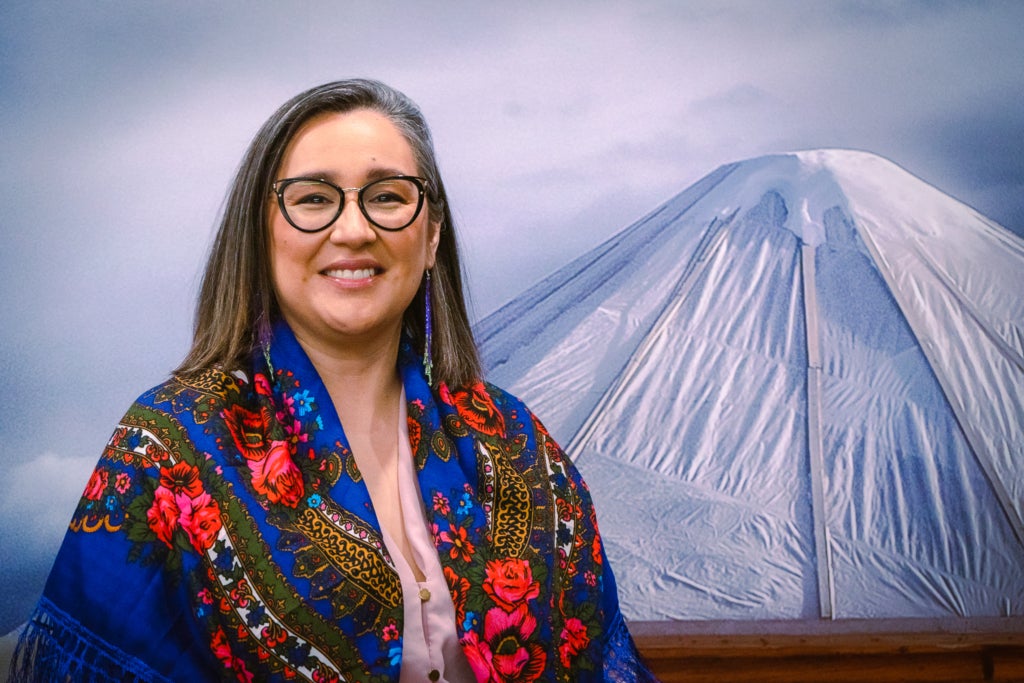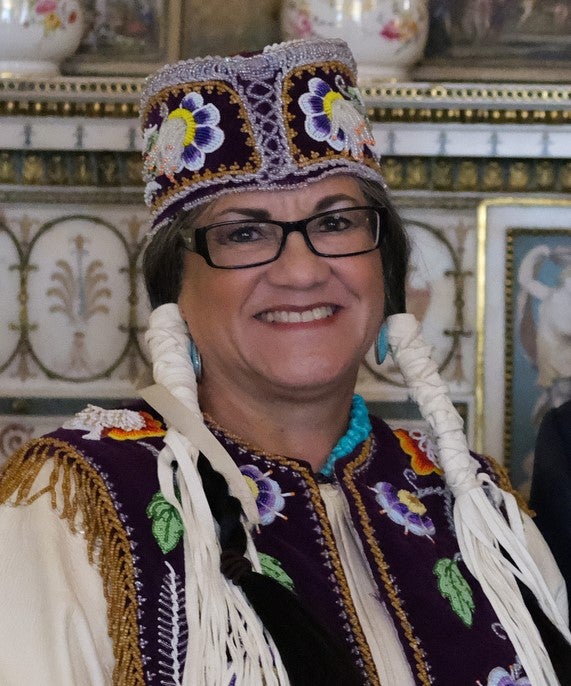Lincoln Institute of Land Policy Names International Land Conservation Network’s (ILCN’s) 2024 Conservation Visionary Award Recipients


QUEBEC, CANADA—Two chiefs of Indigenous Nations in North America will accept the 2024 International Land Conservation Network (ILCN) Conservation Visionary Award for their vision and leadership in setting strategically significant global precedents for land conservation.
Mandy Gull-Masty, Grand Chief of the Grand Council of the Crees (Eeyou Istchee) and Chairperson of the Cree Nation Government, will receive the award on behalf of the many individuals who contributed to the implementation of the Cree Regional Conservation Strategy.
Anne Richardson, Chief of the Rappahannock Tribe in Virginia, will accept the award for her leadership in returning her tribe to their ancestral lands along the Rappahannock River and preserving—in perpetuity—their natural and cultural importance.
“It is our great honor to be able to work with Chief Anne Richardson and Grand Chief Mandy Gull-Masty,” said ILCN Director Jim Levitt. “Their leadership, their perseverance, and their diplomatic skills are world class. It is tremendously important that conservationists around the world take note of the passion and skill that Indigenous leaders bring to the field of land and cultural conservation.”
The ILCN Conservation Visionary Award is presented every three years at the ILCN’s triennial Global Congress to exceptional leaders and organizations that have made enduring contributions to land conservation policy and practice. This year’s Global Congress will bring together 250 land conservation practitioners across six continents from October 16 to 18 in Quebec, Canada. The 2024 Global Congress is cohosted by Canada’s leading land conservation organization, the Nature Conservancy of Canada (NCC).
Grand Chief Gull-Masty is the first woman to be elected Grand Chief/Chairperson of the Grand Council of the Crees (Eeyou Istchee)/Cree Nation Government. Throughout her career, she has championed her people’s interests and advocated for centering Cree values and leadership in the expansion of conservation lands across Eeyou Istchee (the Cree homeland). Through collaborating with nongovernmental organizations and international platforms, Chief Gull-Masty has effectively conveyed the Cree Nation’s concerns and emphasized the importance of Indigenous protected areas.
Grand Chief Gull-Masty played a key role in the Cree Nation’s collective efforts to protect about 10 million acres (some 4 million hectares) in Eeyou Istchee, the Cree people’s ancestral homeland. The Cree Regional Conservation Strategy is distinctive not only for its scale, ambitious targets for biodiversity conservation, carbon sequestration, and sustainable community development, but also for the manner in which it carefully integrates the traditional knowledge of Cree land users, who have lived intimately with the land since time immemorial, and the expertise of Geographic Information System specialists at the Cree Nation and at supporting organizations such as the Nature Conservancy of Canada.
“Protecting and conserving the lands and waters of Eeyou Istchee (the Cree homeland) is essential for protecting our Cree way of life. The Cree Nation has been working pro-actively with our partners on building a large-scale protected areas network across the lands and seas of Eeyou Istchee, for the benefit of present and future generations. I am honored to receive this award on behalf of all of those who have helped in making this happen.”
Chief Anne Richardson has served as Chief of the Rappahannock Tribe since 1998, the first woman Chief to lead a Tribe in Virginia since the 1700s. Through her efforts, the Tribe was acknowledged by the federal government in 2018. Her groundbreaking efforts to advance Indigenous-led conservation have been recognized by US Secretary of the Interior Deb Haaland, who recently appointed Chief Richardson to the National Fish and Wildlife Foundation Board of directors.
Chief Richardson’s vision of returning her Tribe to their ancestral lands in the Rappahannock River Valley led her to partner with conservation organizations and federal agencies to purchase 465 acres (about 188 hectares) of their historic town, Pissacoack, along the four-mile stretch of diatomaceous cliffs known as Fones Cliffs. She is now leading an effort to rematriate more than 1,600 acres (about 650 hectares) of Fones Cliffs, the Tribe’s ancestral homelands, and protect them for their cultural heritage and as critical habitat for bald eagles and waterfowl.
“Rappahannock means “the people who live where the water rises and falls,” said Chief Richardson. “We are river people – the Beaver Clan – industrious builders. We view the eagle as a messenger from the Creator, who tells us to heal the land and reunite it with the people.”
These two initiatives are globally outstanding examples of Indigenous-led conservation and conservation through reconciliation, a growing movement that recognizes the importance of the former and the imperative for cultural respect, equality in value, and practice of diverse conservation systems.
“The global land conservation community must help realize the potential of all sectors of society to contribute to land protection goals,” said Chandni Navalkha, associate director of Sustainably Managed Land and Water Resources at the Lincoln Institute. “Indigenous-led conservation is central to achieving equitable, enduring, and effective efforts to safeguard land for its natural and cultural values.”
“We extend a sincere congratulations to Grand Chief Mandy Gull-Masty and Chief Anne Richardson for their inspiring leadership and for receiving these prestigious awards,” said Catherine Grenier, president and CEO of the Nature Conservancy of Canada. “Working in support of the Cree Nation Government has inspired NCC as an organization to work in new ways—to create new pathways to partnership and transform our ways of thinking that reconcile relationships with the land and each other. We hope others will look to you for similar inspiration, and as a testament to the knowledge, commitment and heart-centered leadership of Indigenous peoples around the world.”
Lead image: Anne Richardson, Chief of the Rappahannock Tribe in Virginia (left) and Mandy Gull-Masty, Grand Chief of the Grand Council of the Crees of Eeyou Istchee and Chairperson of the Cree Nation Government (right), courtesy of the Rappahannock Tribe and Jared Gull
